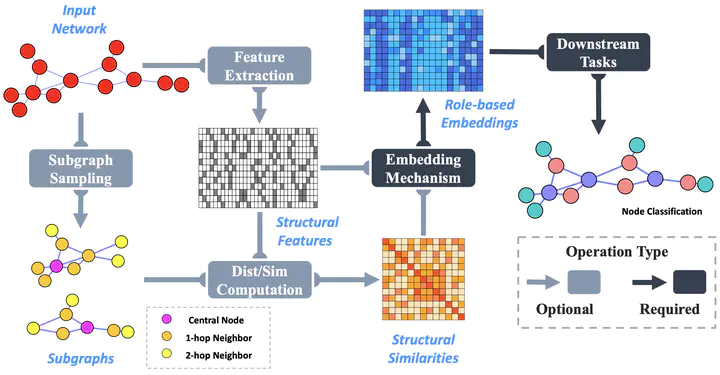
Abstract
A wide variety of Network Embedding methods focus on the proximity of networks, they learn community-oriented embedding for each node, where the representations are similar if two nodes are closer to each other in the network. Meanwhile, there is another type of structural similarity, i.e., role-based similarity, which is usually complementary and completely different from the proximity. In order to preserve the role-based structural similarity, the problem of role-oriented NE is raised. However, there are only a few role-oriented embedding approaches proposed recently. Although less explored, considering the importance of roles in analyzing networks and many applications that role-oriented NE can shed light on, it is necessary and timely to provide a comprehensive overview of existing role-oriented NE methods. In this review, we propose a general framework for understanding role-oriented NE and a two-level categorization to better classify existing methods. Then, we select some representative methods according to the proposed categorization and briefly introduce them by discussing their motivation, development and differences. Moreover, we conduct comprehensive experiments to empirically evaluate these methods on a variety of role-related tasks. Finally, we further discuss the research trend of role-oriented NE from the perspective of applications and point out some potential future directions.